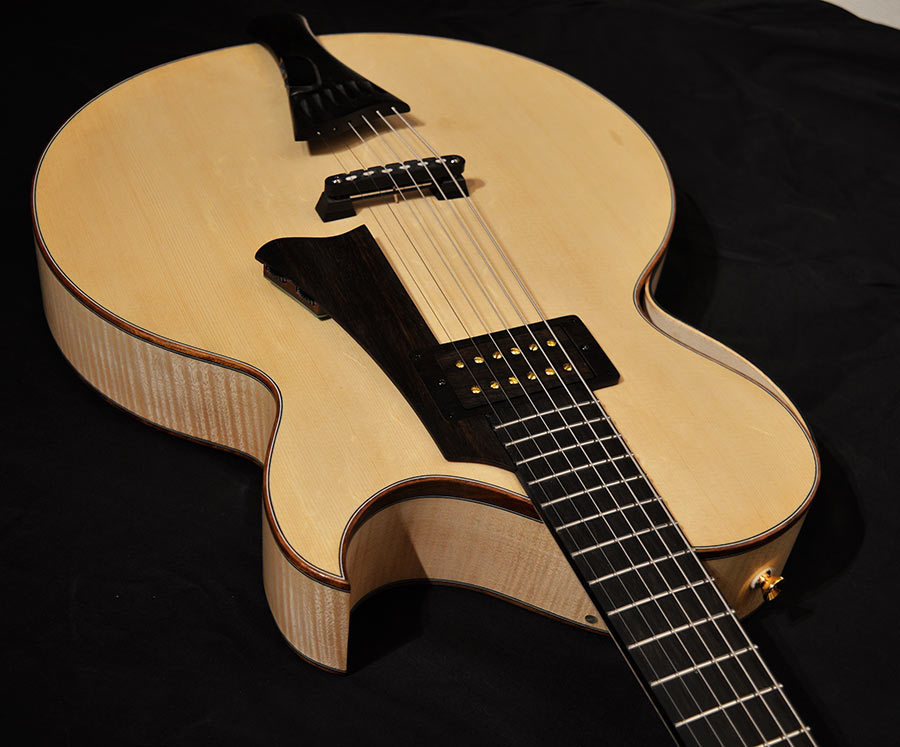This model adds a piezo to the Berlin II model, much as the Berlin IV, but making control much easier thanks to its master volume.
It doesn’t have Gotoh Stealth machines anymore, because they were phased out last year. Now it carries modified Schertlers. The peghead has a lot of complexity (hidden, as usual in my designs) but the end result is outstanding:
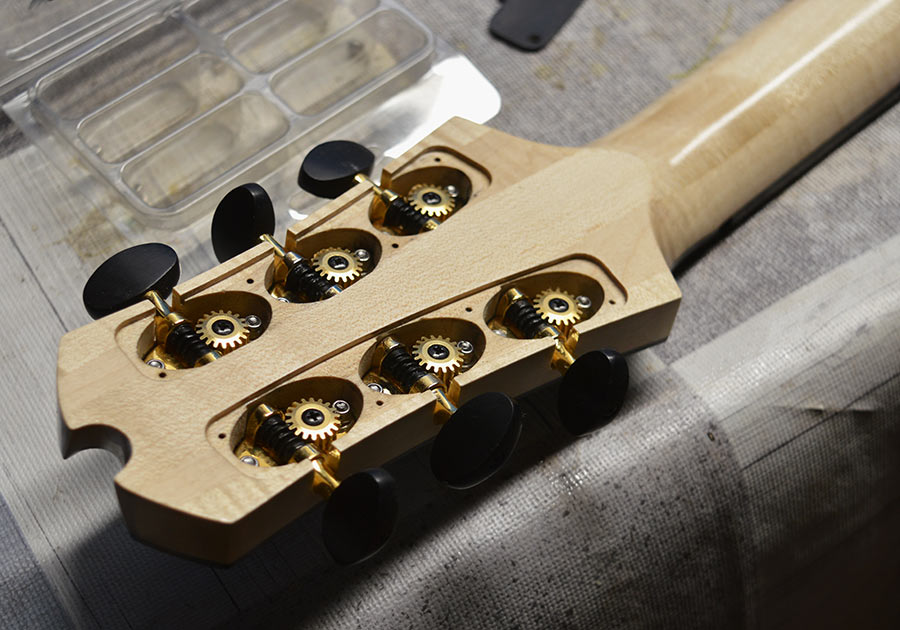
These are the internal reinforcements, right below the peghead overlay, on which the machines are fastened with screws:
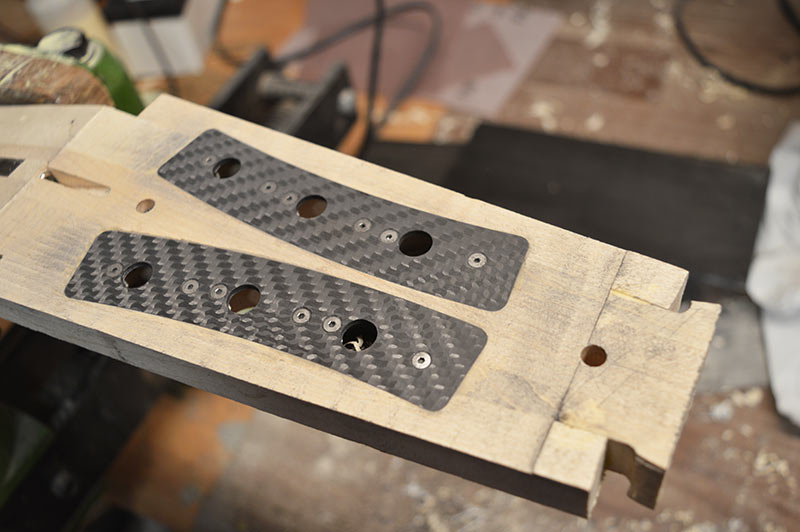
The back covers are a little larger than before, but I like that too. They are still made of a laminate of ebony and carbon:
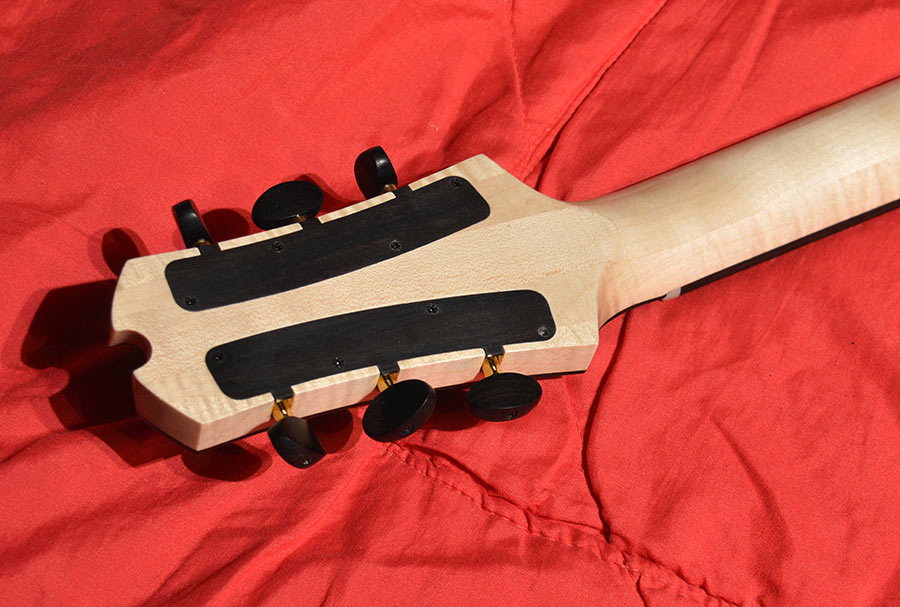
The truss rod nut cover is magnetic. It can be removed very fast:
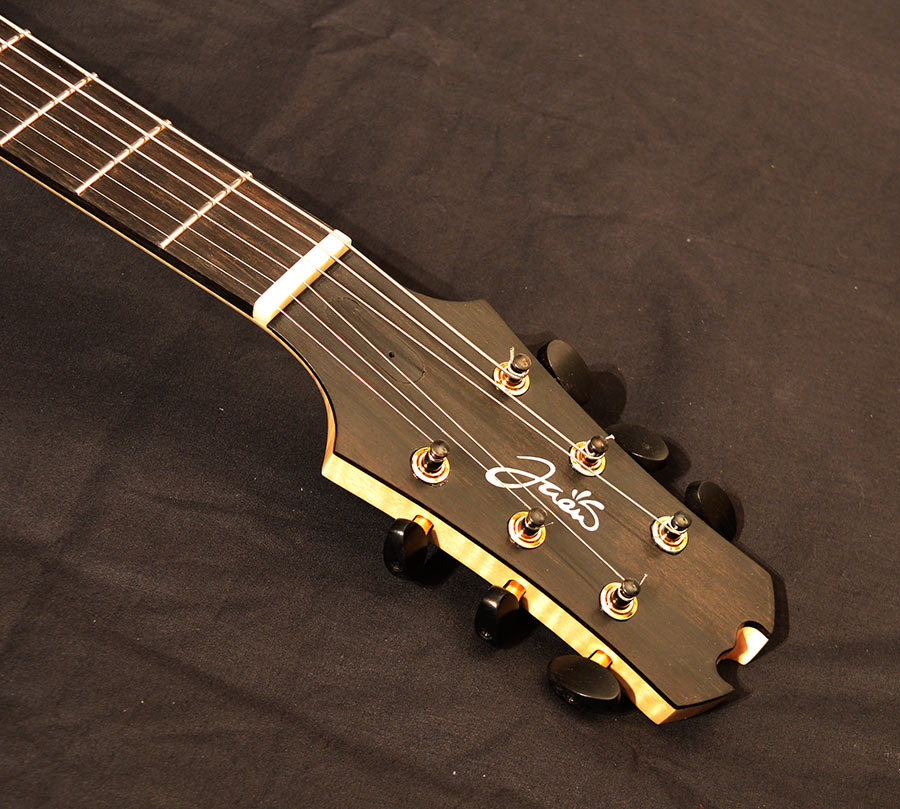
I am using two-way truss rods for the first time.
The tailpiece is complex also, but I have been doing this for quite a long time:
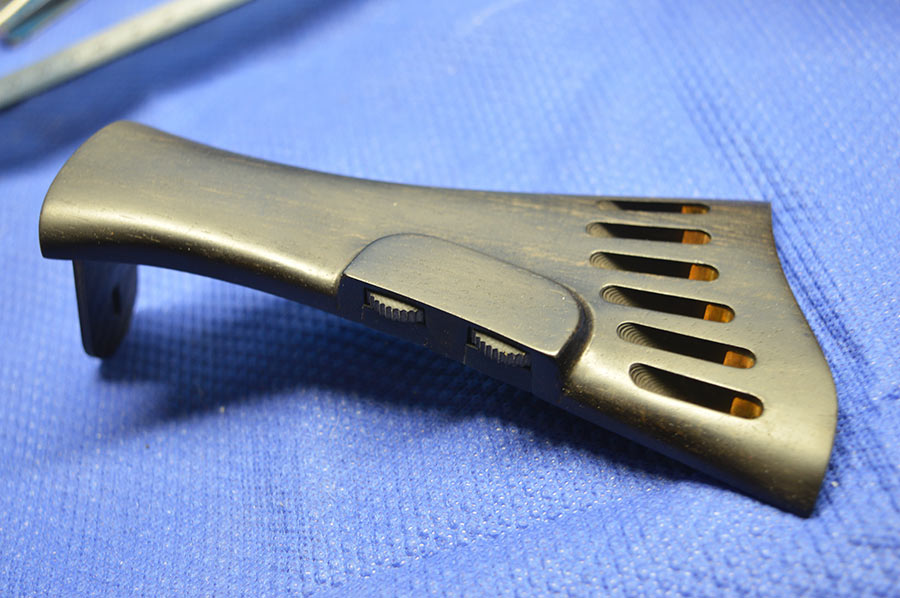
Here it is before installation. It has two pots, one for the magnetic pickup and the other for the piezo.
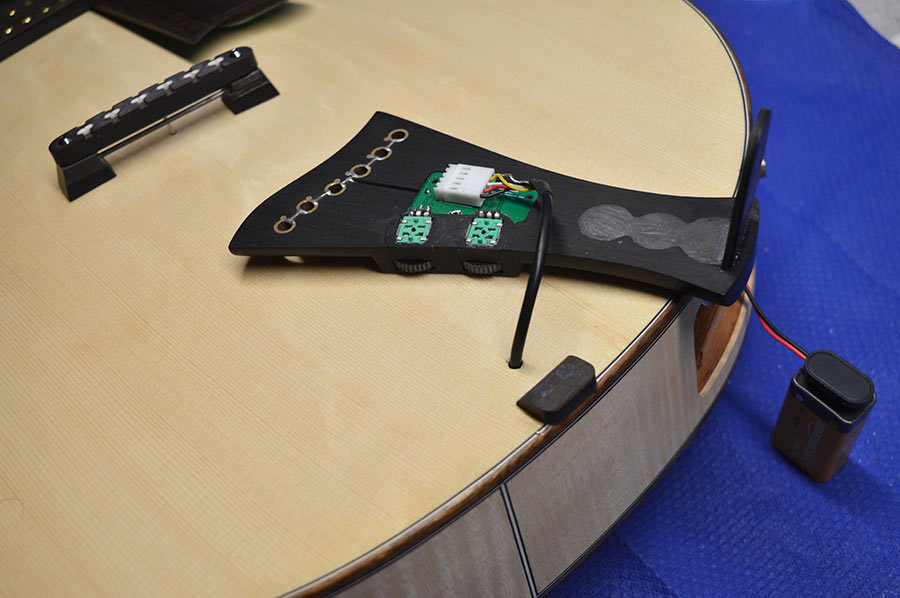
The “marcolpeador” (my Spanish word that joins pickup ring and pickguard) is made of ebony, internally reinforced with a printed circuit that also simplifies the connections with the rest of the electronics. This is another complex design with a simple purpose: that, even if it is made of wood, it doesn’t break. It has a master volume (with two pots that move at the same time thanks to gears) and a tone control for the magnetic pickup, which is my design also:
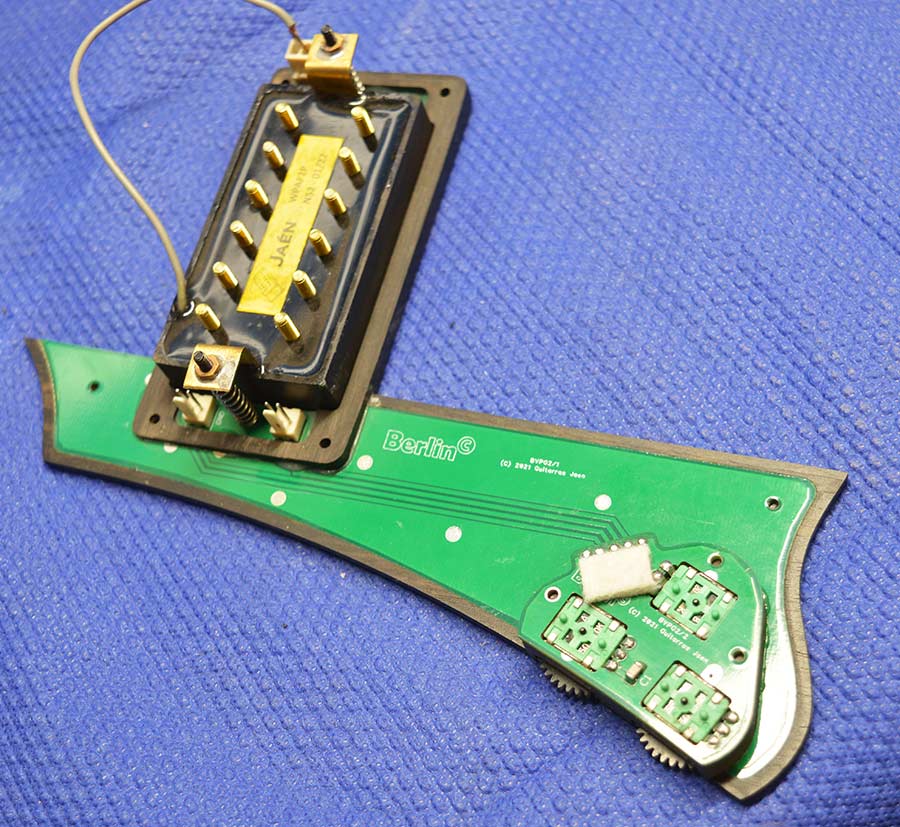
The marcolpeador, from the outside, can be seen as two pieces of ebony (here before their final sanding):
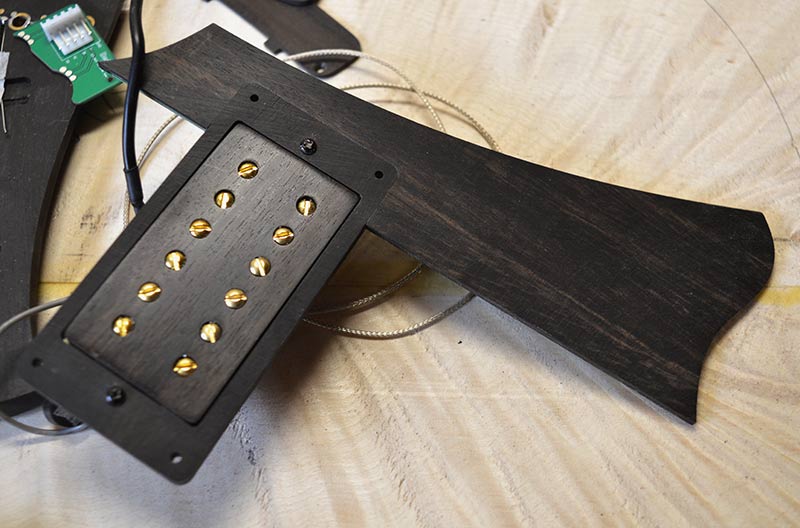
The fiberglass reinforcement/PCB is inside those pieces:

There is another ebony piece below the PCB that makes the pickup ring follow the guitar top surface.
The marcolpeador is connected to the preamp board by means of two connectors. Here they are connected for tests:
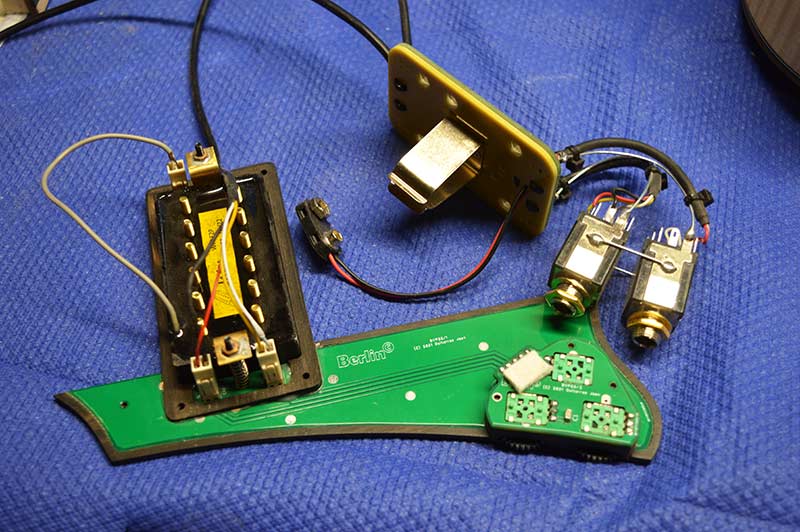
This is the guitar before the installation of the marcolpeador:

Internally, the preamp board is on that box on the right, that has the battery inside:
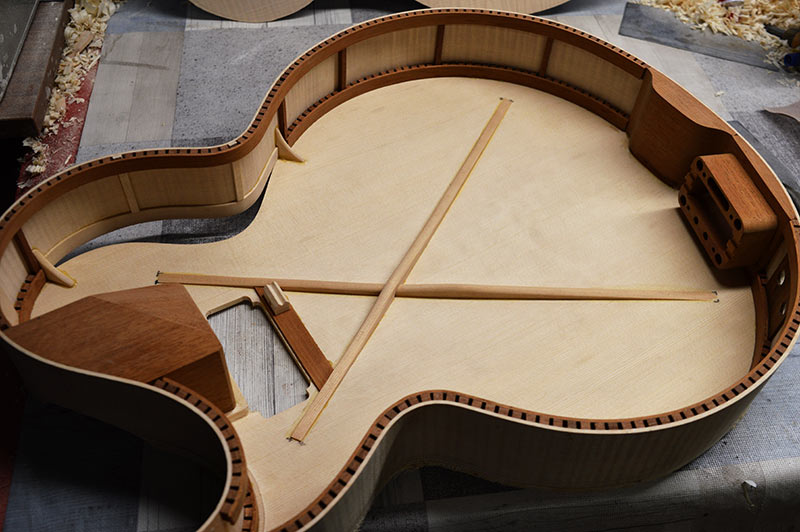
I make and design the preamp also. It is based on a charge amplifier. This is used for piezos quite often, although not so much for guitar piezos (Mi-Si is the only one I know that uses this technique).
You can see the external access to the battery here:
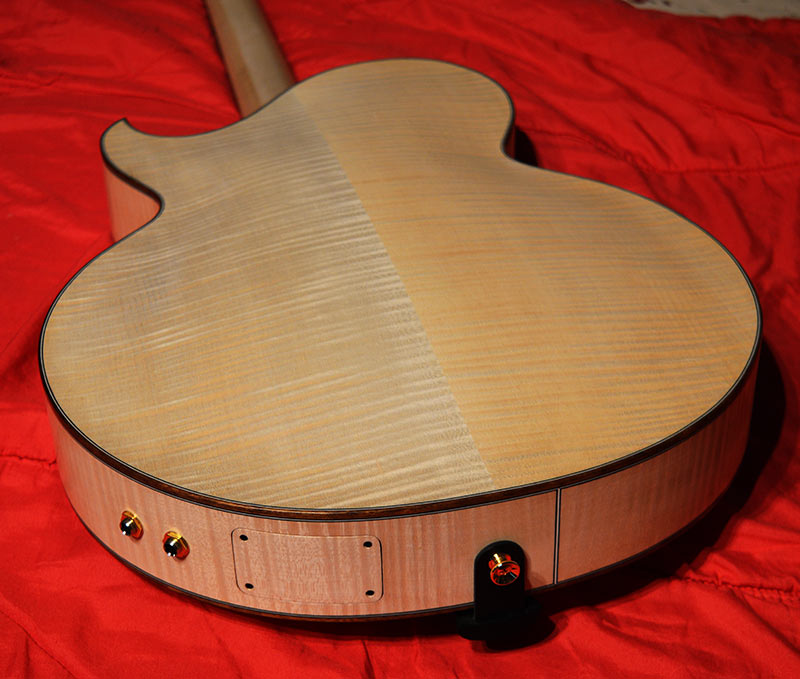
As you can see, the guitar has connectors for two jacks (see the manual).
The sides join off center due to one of them being very long. The reason is the heel-less neck:
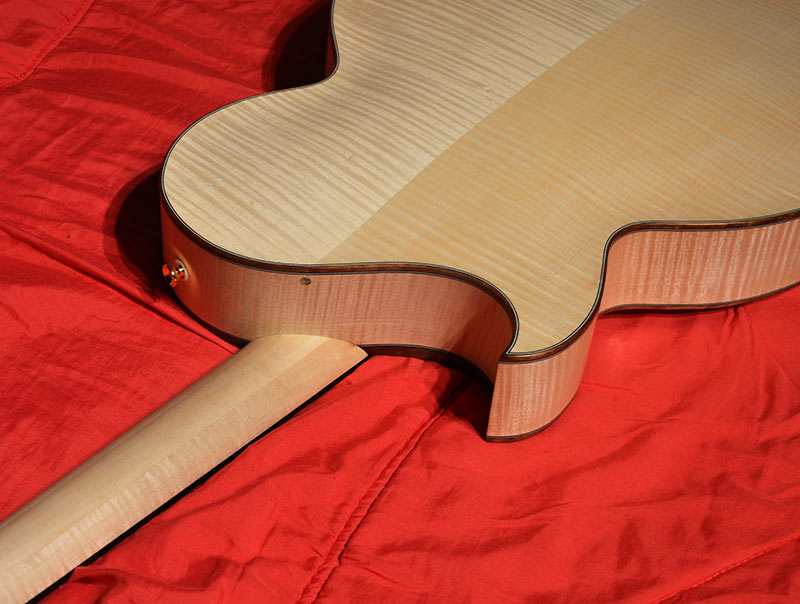
The bridge:
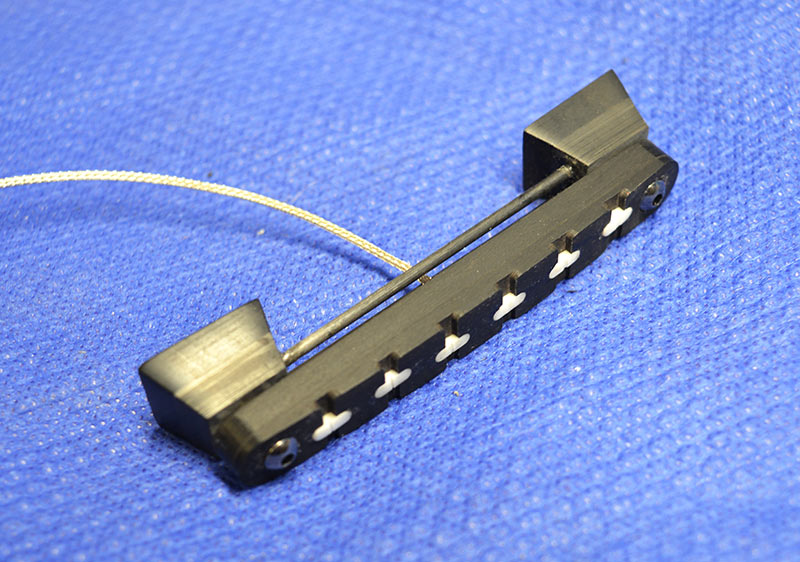
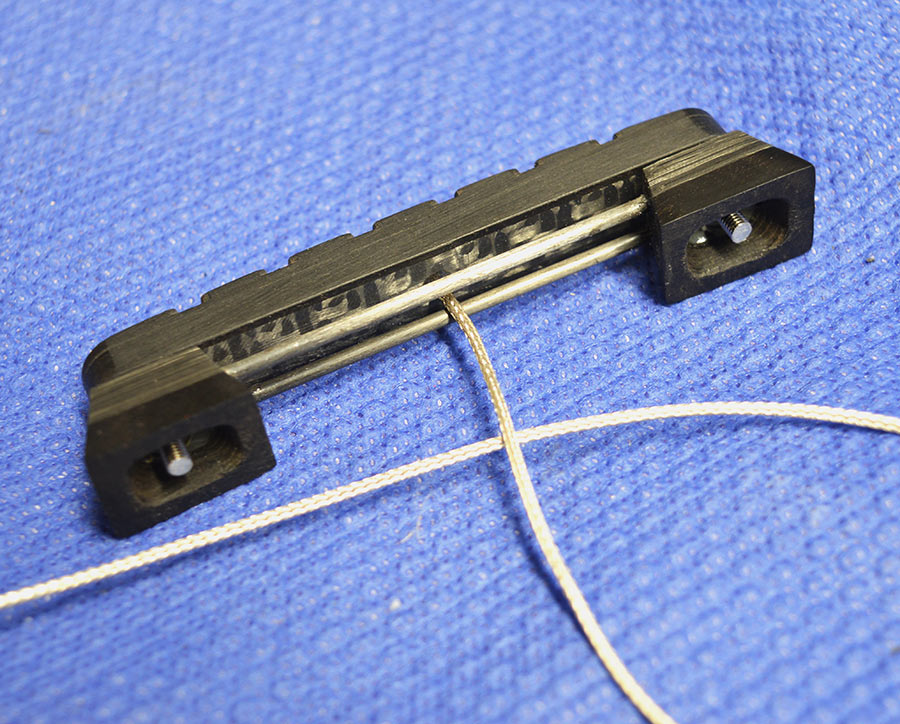
I make it myself, starting from the piezo crystals. I can almost hear voices telling me why I am not using some unit from Fishman, for example, one of those piezos that are set under the bridge of flat top guitars. The answer is I can’t. Those piezos originate a lot of problems in archtops like this, because the pressure that the strings exert on the bridge is very different. If you try it, you’ll end up with some strings sounding louder than others, and there is not a lot that can be done. That’s why I designed this saddle, starting from tiny crystals so that the pressure on them is higher. I had a lot of problems. A LOT. But in the end I made a sturdy reliable design.
The guitar comes with a plug for the soundhole. This is a device that lets you play at a slightly higher volume without getting into feedback:
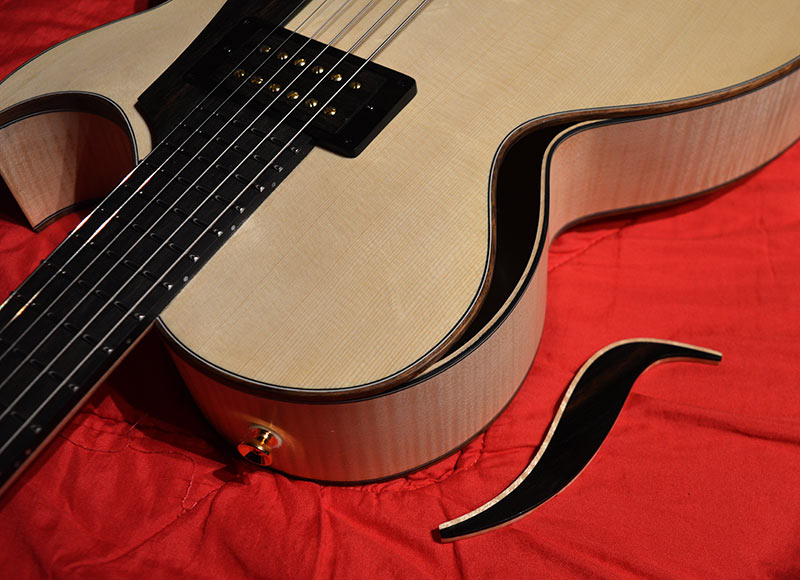
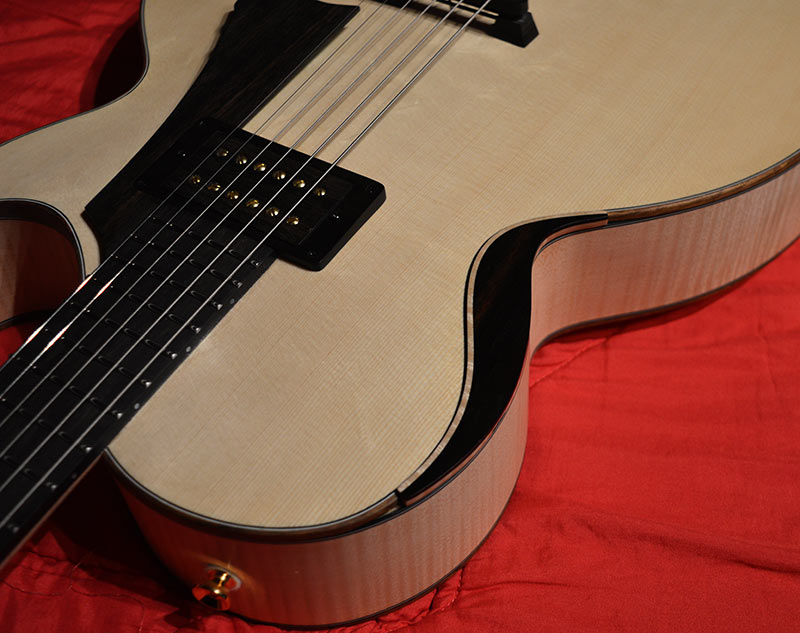
The finish is epoxy+Tru-Oil, Ken Parker style (thanks!). The uniform thickness and the smooth touch, far from the rubbery feeling of glossy finishes, are hard to beat:
